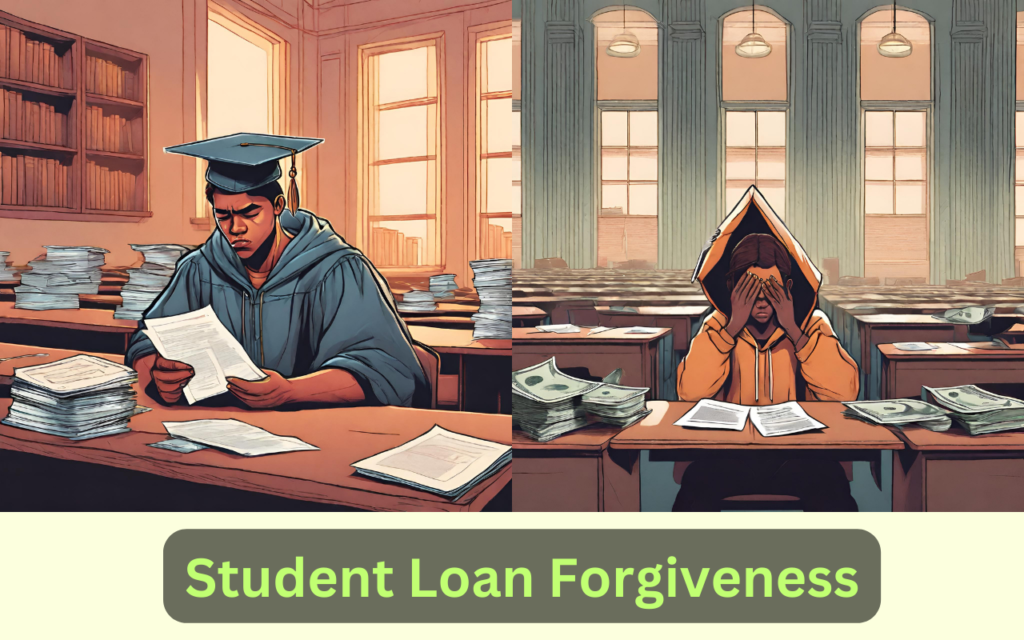The Road to Student Loan Forgiveness: A Step-by-Step Guide to Eliminating Educational Debt
Overburdened by monthly student loan payments? You may qualify for forgiveness programs that eliminate some or all of your remaining debt. But navigating the myriad programs and requirements can be confusing. This comprehensive guide cuts through the complexity to clearly explain different pathways to potential student loan forgiveness.
Overview of Student Loan Forgiveness Options
Several programs offer the possibility of discharging student loans after meeting certain criteria:
- Public Service Loan Forgiveness (PSLF): Forgives federal loans after 120 qualifying payments while working full-time for an eligible government agency or nonprofit.
- Teacher Loan Forgiveness: Awards up to $17,500 in forgiveness for federal loans to qualifying teachers in low-income schools after 5 consecutive years of service.
- Income-Driven Repayment (IDR) Forgiveness: Discharges remaining federal loan balance after 20-25 years of monthly payments based on income and family size.
Each program has specific eligibility rules and processes. Let’s explore them in detail.
Demystifying Public Service Loan Forgiveness

PSLF offers federal loan forgiveness for employees of government organizations and nonprofits. Here’s how it works:
- You must have eligible federal Direct Loans. Others can potentially qualify through federal consolidation.
- Qualifying employers include government agencies at all levels and 501(c)(3) registered nonprofits. You must work full-time.
- Make 120 monthly payments under an IDR plan, Standard Repayment, or 10-year fixed payment while employed. These are considered qualifying payments. Payments don’t have to be consecutive.
- After 120 total qualifying monthly payments, the remainder of your federal loan balance is forgiven tax-free.
Strategically maximize PSLF through qualifying employers and repayment plans.
Navigating Teacher Loan Forgiveness
If you teach full-time for 5 consecutive years in certain schools and subjects, you may qualify for forgiveness up to $17,500 on federal loans:
- Eligible schools include low-income elementary or secondary schools.
- Qualifying teaching service includes multi-subject teachers in elementary schools and secondary teachers of math, science, special ed, English or social studies.
- For Perkins loans, additional cancellation benefits like 15% discharge per year may apply.
- The application requires documentation of your teaching service. Work with your school’s human resources department.
Pursue opportunities like additional certifications to boost eligibility.
Income-Driven Repayment Forgiveness
IDR plans allow discharge of a federal loan balance after a set repayment period based on your income. Options include:
- Income-Based Repayment (IBR): Forgiveness after 25 years of payments for those borrowing before July 2014 and 20 years for new borrowers.
- Pay As You Earn (PAYE): Forgiveness after 20 years of payments for those borrowing after October 2007.
- Revised Pay As You Earn (REPAYE): Forgiveness after 20 years (undergrad loans) or 25 years (grad loans) for those borrowing after July 2014.
Your monthly payment is 10-20% of discretionary income. The forgiven amount may be taxed as income, so plan ahead.
Ace the Student Loan Forgiveness Application Process

When applying for forgiveness programs:
- Review eligibility criteria and gather documentation of qualifying employment and payments.
- Complete required application forms fully and accurately. Double check for errors to avoid rejection and delays.
- Submit on time annually for renewal. Meet deadlines for recertification.
- Keep meticulous records of all forms, payments, and correspondence. This protects you if any issues arise.
Seek help from loan servicers or nonprofits like the Institute of Student Loan Advisors if you hit snags.
Strategies for Maximizing Potential Forgiveness
Leverage these tips to optimize your path to forgiveness:
- For PSLF, consolidate loans if needed into a Direct Loan and use a qualifying IDR repayment plan.
- For teacher forgiveness, teach shortage subjects and pursue a graduate degree or additional certifications that boost eligibility.
- For IDR forgiveness, balance monthly payments with ability to save for retirement and other goals. Make one-time extra payments when possible to pay down principal faster.
- Enroll and re-certify annually. Confirm you meet all ongoing criteria and address any changes to stay on track.
- Seek guidance from financial advisors to integrate loan forgiveness strategies into your overall financial life plan.
Avoiding Pitfalls on the Road to Forgiveness
Sidestep these common hurdles:
- Basing payments on the wrong repayment plan or incorrect loan type. Carefully confirm which options qualify for the forgiveness program you seek.
- Letting documentation like proof of employment lapse. Thoroughly understand requirements and set reminders to re-certify eligibility on time.
- Missing changes in rules or eligibility for forgiveness programs. Frequently revisit criteria and update plans accordingly.
Staying vigilant and proactive is key to successfully navigating the path to forgiveness. Arm yourself with knowledge and resources so you can reduce the financial burden of student debt.
Additional government websites and nonprofits like Student Loan Borrower Assistance can provide personalized guidance on pursuing loan forgiveness. You’ve got this!
Thanks for reading. Any issues, contact us.
